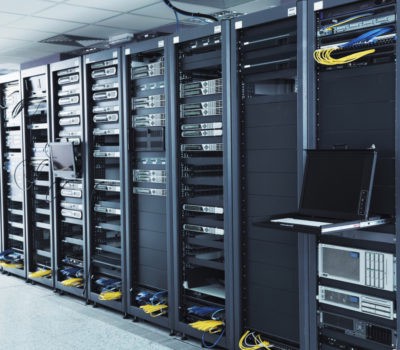
by Sangeetha | Dec 6, 2021 | Storage
Most IT CEOs are no longer hesitant to maneuver their maintenance agreements from instrumentation makers to third-party hardware maintenance suppliers.
OVERVIEW:
Switching service contracts from instrumentation makers to third-party storage maintenance (TPM) suppliers enables organizations to not simply scale back the prices but conjointly increase the service’s standard. It conjointly ensures a more significant level of responsibleness and acts as one purpose of contact for all IT service needs.
Navigator Systems could be a leading third-party service supplier in the Republic of India with over thirty-five years of expertise and over 20k IT systems underneath contract nationally. It conjointly has the NO.1 multivendor hardware stock in India with over thirty forward stocking locations.
Navigator Systems ensures insurance to essential IT systems globally by providing bespoke SLA and high-quality support at a fraction of the prices. Navigator Systems is ready to supply higher service than instrumentation makers in specific regions because of its massive footprints. what is more, additionally to price savings, and superior IT support services TPMs provide advantages that include:
• an on the spot international support model
• Inventory management services
• versatile service-level agreements
Third-party maintainers give technicians and components to keep up IT merchandise from servers and networking to mainframes and storage. Leading international third-party maintenance supplier Navigator Systems began its operations by providing end-of-service-life support for IT hardware that area unit subjected to “planned obsolescence” or providing spares to its hardware that makers did not support.
Later they began to expand their capabilities into providing international multivendor support to essential IT hardware by deploying stocks domestically and creating them on the market for crucial interventions. NavigatorSystems, through its years of expertise, provides end-of-service-life support services globally and has over thirty-five years of expertise in delivering multivendor spares and, therefore, the technical capabilities to keep them up even once they are well beyond the manufacturer’s warranty and support for a few devices.
According to a report, several instrumentation makers providing outsourced services admit TPMs to extend their internal service supplier capabilities to support instrumentation factory-made by others.
OPPORTUNITY:
There area unit ample opportunities ranging from a superior support model to optimizing the ROI:
1. As per the analysis, third-party services are a competitive threat to the service suppliers. In several cases, the service suppliers area unit reluctant to scale back their maintenance fees at pledge expiration and renewal. Many reports recommend that almost all hardware stay stable when the initial bug fixes between one and a couple of years. And since the hardware is durable, it might be higher to use constant hardware rather than finance during a new infrastructure once more.
2. Competitively bespoke SLA. We can conjointly scale back prices by providing an extraordinarily competitive & customized SLA at contract renewal.
3. Worldwide Coverage. With over thirty-four offices worldwide and network coverage in over 340 locations worldwide, no service request is taken into account too laborious.
4. Elimination of maintenance contracts wherever attainable. In some instances, the number of hardware failures on sure instrumentation may be low enough to require extended warranties. Within the case of network instrumentation, having spare devices existing will eliminate the requirement for maintenance support.
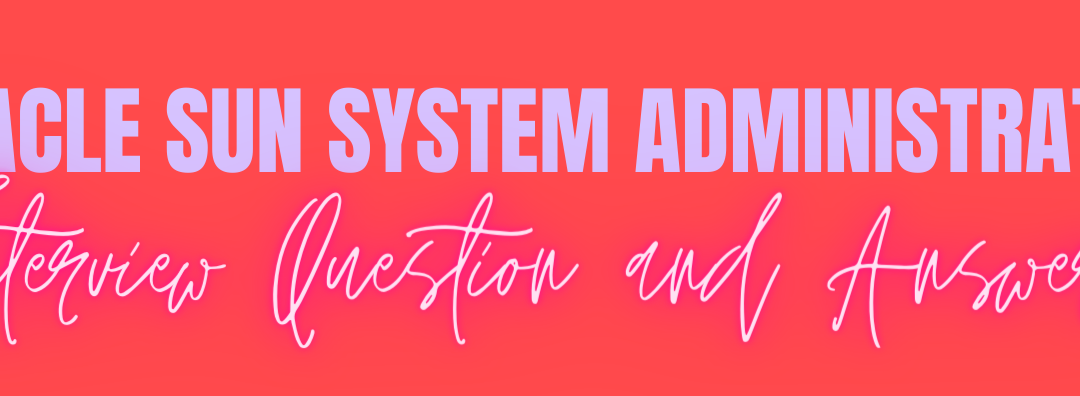
by Sangeetha | May 28, 2021 | Server, Server AMC, Server and storage solutions, Storage
Oracle Solaris Operating System Interview Questions
Oracle Solaris is a proprietary Unix operating system originally developed by Sun Microsystems earlier SunOS in 1993. In 2010, after the Sun acquisition by Oracle, it was renamed Oracle Solaris. Solaris is known for its scalability, especially on SPARC systems, and for originating many innovative features such as DTrace, ZFS and Time Slider. Solaris supports SPARC and x86-64 workstations and servers from Oracle and other vendors.
Some of the few Oracle Solaris Operating System Interview Questions are below
What Is An Alternative To The “top” Command On Solaris in interview questions?
Ans:
# prstat –a
Is It Possible To Create Swap In New Hard Disk Without Format?
Ans:
“ No “ without label the drive, you can’t do anything
Is It Possible To Edit The Crontab Using Vi, It Is Not Recommended But It Is Possible By Editing?
Ans:
- # vi /var/spool/cron/crontabs/root
- The command to edit the crontab is #crontab -e
What Is Mean By Paging & Server Average Time in Oracle sun server?
Ans:
If a disk shows consistently high reads/writes along with , the percentage busy (%b) of the disks is greater than 5 percent, and the average service time (svc_t) is greater than 30 milliseconds, then one of the following action needs to be taken
Cannot Open ‘/etc/path_to_inst’” ?
Ans:
System can not find the /etc/path_to_install file. It might be missing or corrupted and needs to be rebuild.
To rebuild this file boot the system with -ar option :
ok>boot -ar
Press enter to select default values for the questions asked during booting and select yes to rebuild /etc/path_to_install
The /etc/path_to_inst on your system does not exist or is empty. Do you want to rebuild this file [n]? y
system will continue booting after rebuilding the file.
How Will You Comment Error Line In /etc/system File ?
Ans:
# Vi /etc/system
(To comment the error line in /etc/system files, we have to use *)
What Is Difference Between Incremental Backup And Differential Backup?
Ans:
Incremental: Only those files will be included which have been changed since the last backup.
Differential: Only those files will be included which have been changed since the last Full backup.
How Many Ufsdump Level?
Ans:
0-9 level
0 = Full Backup
1-9 = Incremental backup of file, That have changed since the last lower level backup.
What Is Different Between Crontab And At Command?
Ans:
Crontab: job can be scheduled
At: Job can be a run once only
Difference Between Ufs And Tar Command?
Ans:
ufsdump:
- Used for complete file system backup.
- It copies every thing from regular files in a file system to special character and block device files.
- It can work on mounted or unmounted file systems.
- Tar:
- Used for single or multiple files backup.
- Can’t backup special character & block device files.
- Works only on mounted file system.
Syntex To Execute A Ufsdump ?
Ans:
# ufsdump 0uf /dev/rmt/1
To Check The Status Of The Media Inserted On The Tape Drive from Oracle Operating System?
Ans:
# mt /dev/rmt/0 status
How Will You Take Ufsdump And Ufsrestore In A Sing Command Line?
Ans:
# ufsdump 0f – /dev/rdsk/c0t0d0s6 | (cd /mnt/haz ufsrestore xf -)
What Is The Physical Device To Check The 2 Nodes Connect In Cluster by oracle system administrator?
Ans:
Physical fiber cable which is connect to the 2 nodes is called a HTEARTBEAT
Where Will Be The Configuration For Metadevice?
Ans:
#/etc/lvm/md.tab
or
#/etc/opt/SUNWmg/md.tab
Explain Raid0, Raid1, Raid3 in Oracle Solaris Operating System interview questions?
Ans:
RAID 0 Concatenation/Striping
RAID 1 Mirroring
RAID 5-Striped array with rotating parity.
- Concatenation: Concatenation is joining of two or more disk slices to add up the disk space. Concatenation is serial in nature i.e. sequential data operations are performed serially on first disk then second disk and so on. Due to serial nature new slices can be added up without having to take the backup of entire concatenated volume, adding slice and restoring backup.
- Striping: Spreading of data over multiple disk drives mainly to enhance the performance by distributing data in alternating chunks – 16 k interleave across the stripes. Sequential data operations are performed in parallel on all the stripes by reading/writing 16k data blocks alternatively form the disk stripes.
- Mirroring: Mirroring provides data redundancy by simultaneously writing data on to two sub mirrors of a mirrored device. A submirror can be a stripe or concatenated volume and a mirror can have three mirrors. Main concern here is that a mirror needs as much as the volume to be mirrored.
- RAID 5: RAID 5 provides data redundancy and advantage of striping and uses less space than mirroring. A RAID 5 is made up of at least three disks, which are striped with parity information written alternately on all the disks. In case of a single disk failure the data can be rebuild using the parity information from the remaining disks.
What Are The Daemons In Nis Server?
Ans:
rpc.yppasswdd
Ypxfrd
rpc.ypupdated
What Are Processing Daemon In Nis?
Ans:
Ypserv
Ypbind
How To Boot The Oracle Sun server from Solaris System In 64 0r 32 Bit Kernel?
Ans:
For 64 bit:
# eeprom boot-file=”/kernel/sparc9/unix
or
OK printenv boot-file
OK settenv boot-file kernel/sparc9/unix
For 32 bit:
# eeprom boot-file=”/kernel/unix
or
OK printenv boot-file
OK settenv boot-file kernel/unix
Which Command To Lock The User Account?
Ans:
# lk username
About US
Navigator System offers end-to-end data center maintenance services that allow you to extend the life of your IT assets.
MANAGED IT SERVICES are
- 24×7 Field Services & Technical Support
- Multi-Vendor Maintenance Programs
- Cloud & Network Migration Services
- Monitoring & Infrastructure Management
- Consulting & Project Management Services
- Network Security
- Network Lifecycle Management
- Asset Recovery Programs
- Spares Management & Repairs for AMC contracts
- Materials Management & Reverse Logistics for AMC contracts
Call our Sales Team: +91 9986288377
Email: sales@navigatorsystem.com
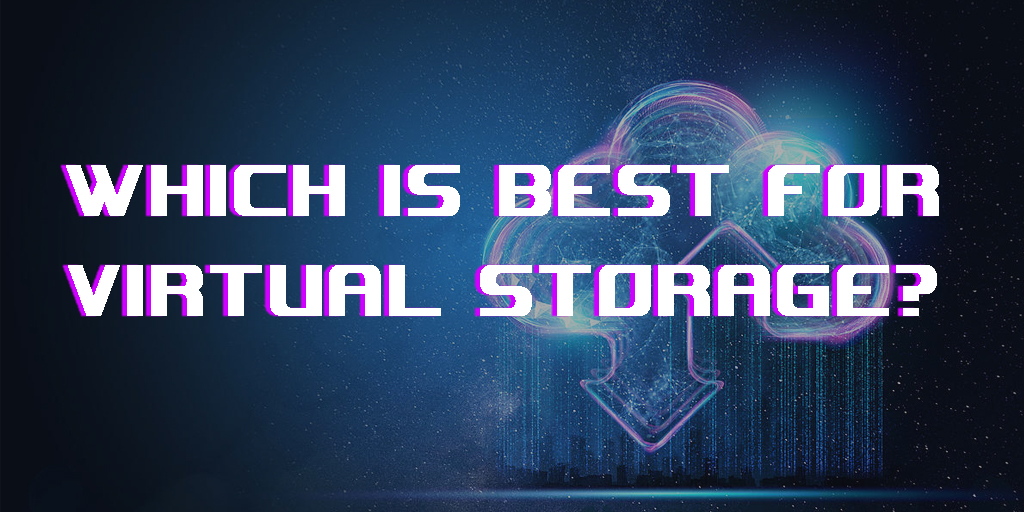
by Sangeetha | Oct 6, 2020 | Storage
1. MORE TRAINING TIME:
While most data centers do have a shared storage infrastructure, they also have multiple storage systems on that infrastructure. These systems are often bought for specific environments like virtual desktop infrastructure ( VDI) or database applications as well as a more general purpose storage system for the bulk of the data center’s needs. If these systems and their infrastructure can be leveraged, instead of replaced, then there would be incredible value in abstracting the storage intelligence and applying the same data services across all the storage systems in the environment. It would reduce training time and allow for better overall use of storage resources. But for true unification of services to be viable, the data services provided by the SDS solution would need to be at least as robust as what the storage systems themselves offer. The data center is not going to want to take a step backwards and lose features in order to have a unified data services interface.
2. LACK COMPLETENESS:
The problem is that many Software defined storage solutions lack completeness in their data services offering. A simple example is that many SDS solutions lack the ability to perform data replication to a remote location so that a disaster recovery copy of data can be created. Even rarer is the ability to migrate data into the SDS architecture itself. Data cannot be simply copied over, so some form of data migration facility from the old storage platform to the new should be provided. Otherwise the data will have to be restored from a backup copy
3. COST COMPARISON:
Finally, many SDS solutions claim that they provide the data center with a cloud like hyper-converged architecture, but few provide a cloud-like economics model. These solutions are often software only and most are licensed by capacity packs. Many will also charge an additional fee for advanced features.
This can be a problem because most data centers are never at the right capacity point to take advantage of pack pricing. For example a starter pack may provide storage service from 1-20TBs, and the next pack may support 20-45TB’s. What if the organization has 21TB’s of storage capacity? That means they need to upgrade all the way to the 45TB license for 1 more TB of support. Instead, Software defined storage solutions should price on a very granular per TB subscription model that is verified once per year and all features should be included in the subscription price. Another cost that goes undiscussed by most SDS solutions is the cost associated with the inability to support existing infrastructure and storage systems
Most storage systems that you buy from major manufacturers are really storage software running on servers designed specifically to house a lot of hard disk or flash solid state drives (SSD). They have a lot in common with software-defined storage and there is almost nothing that would prevent these vendors from virtualizing their storage software and also being software defined.

Best Storage Monitoring and Management Tools and Software for SAN and NAS Devices
Phone: +91 080 25307537/ 38/ 49
Sales: +91 9986288377
Email: sales@navigatorsystem.com
Storage systems can differ in a few ways from SDS.
- First, they can provide newer and more innovative services. To some extent, though, this is just out-developing SDS vendors with better software. Storage system vendors do have a lead in the basic core services they provide today and that might give them an advantage in developing the next generation of storage services. They might also have an advantage in knowing what lies beneath their software. For example, a flash vendor might decide it’s worth investing in deduplication technology because they have IOPS to spare and expense to eliminate. A software-defined storage manufacturer would not have this advantage and might not invest in primary storage deduplication.
- With a storage system, you know in advance that everything within that system is designed or at least has been tested to work together. Also, support is greatly simplified — if one vendor provides most of the storage infrastructure, it is liable for making it all work. For the under-staffed IT department these are welcomed advantages over software-defined storage.
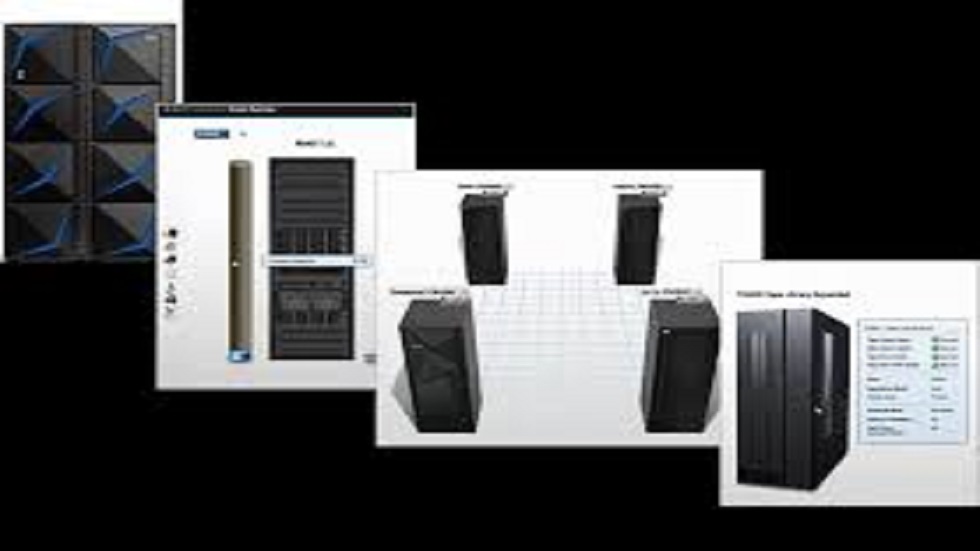
by Sangeetha | Apr 3, 2020 | IBM hardware maintenance, IBM hardware post warranty Support, Server and storage solutions, Storage
A financial institution client needed an IBM TS7700 for a disaster recovery declaration to match their current production system. This system was currently End of Service Life (EOSL) and the only option provided by the OEM was to upgrade to the latest technology and architecture.
Solutions-Customized Virtual Tape IBM TS7720 system with embedded services
This solution included the exact hardware configuration required, systems assurance meetings, installation, migration support, customized maintenance SLA’s, remote monitoring, L3 technical support and local sparing.
We also created the exact client environment in our own data center for additional testing and backup. Navigator Systems maintenance portal was provided for online ticketing and asset management of the client’s environment. The overall solution provided by Navigator System created great value to our client and ultimately a significant cost savings versus migrating to the latest generation OEM supported platform.
IBM Hardware-Mission Critical Support :
Navigator Systems provide Third party maintenance services for IBM Server ,storage and Networking Hardware that are uniquely designed to deliver the highest quality of infrastructure support for mission critical operations. As a Navigator Systems client, you’ll notice a superior level of commitment and personalized support – day or night – from the most experienced technical engineering team in the industry.
With this in mind, Navigator Systems focuses on business outcomes that leverage our deep technical expertise to help clients achieve more benefits—including enabling employees, improving service levels, and delivering game‑changing economics.
IBM Hardware- Third Party maintenance Services :
Navigator systems Third-Party Maintenance services specializes in the support for mission critical IBM servers and storage within the data center. We extend your equipments’ useful life long after the manufacturer’s warranty has expired.
IBM hardware maintenance and support:
Navigator Systems IBM hardware maintenance and support services provide your company with an independent IBM alternative for post-warranty IT hardware support on mission-critical and disaster recovery IT assets throughout India.
Rely on us for IBM hardware post warranty Support:
Instead of replacing your IBM hardware post warranty, rely on us to help you get the most from your IBM investment.
Contact Us: Navigator system,( Navigatorsystem.com)
Phone: +91 080 25307537/ 38/ 49
Sales: +91 9986288377
Email :sales@navigatorsystem.com
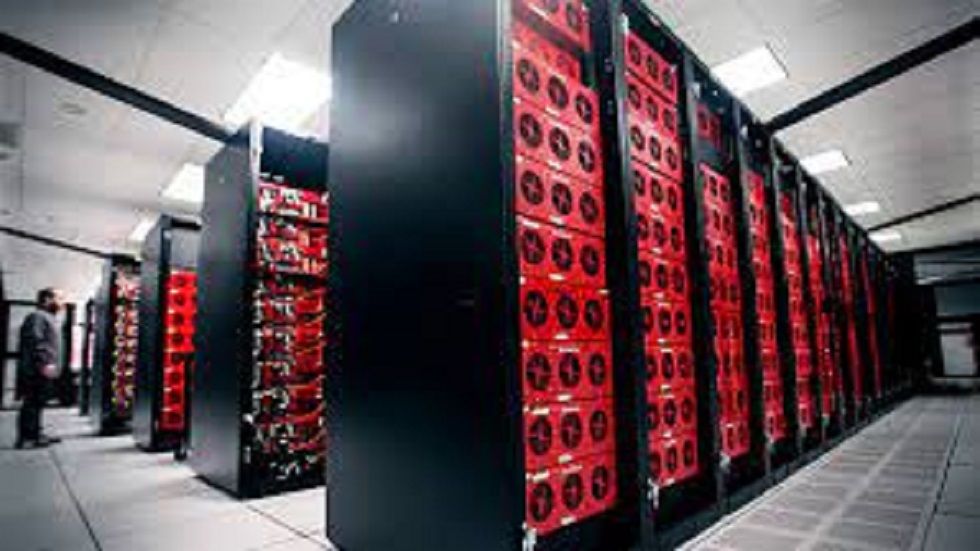
by Sangeetha | Jul 10, 2017 | Server, Server and storage solutions, Storage
Servers are at the core of your business, so in order to ensure your servers are operating at peak performance, you need to do healthy network. Checklist of Best Practices for Server Environment:
Patches – prevent poor performance or system crashes
Preventative maintenance: Preventing maintenance from Navigator System AMC Contract ensures servers are always running at the highest level.
Server reboots: Help prevent crashes.
Diagnostics: Help detect failing hardware components and potential data corruption in future.
Backups: Backup of data should be completed regularly. This ensures the data can easily be recovered should a server fail.
Security – your critical data is safe from hackers
Antivirus: Programs will be barrier against viruses that destroy important files or disable critical systems.
Firewall(s): To prevent unauthorized users and helps monitor network activity for suspicious behavior.
Tight permissions: Limit control of what your employees have access to. Loose permissions makes it easier for hackers.
Password changes: Password should change regularly and should not include easy passwords.
Monitoring – Server health will help detect and correct small problems quickly
CPU/memory utilization: Lets you monitor how much server processor and memory are being used, avoiding a crash due to lack of processor or memory.
Disk utilization: Insight required as to the amount of disk space being used.
Process monitoring: All critical system processes are running.
Back-up monitoring: Yes. Periodic backups are monitoring provides peace of mind.
Antivirus monitoring: Always verify whether antivirus software is running properly and any virus has been eliminated.
Log monitoring: Identify your system is generating error messages or warning messages regularly.
Alerts: Ensure the right contact is being alerted immediately should an issue arise.
Data continuity –A plan in place to get back your server and business up and running again in as little time as possible when the unthinkable happen
Reliable back-ups: Both external hard drives and the cloud, making it easy to backup data on a continual basis.
Essential information: Book keeping record of what data is backed up and where it is stored.
Hardware recovery: Plans should include a backup server should a server crash.
Off-site storage: Data continuity plan should be stored in a secure off-site location.
Expert help –Navigator System understands of what is needed to maintain a healthy network by getting essential information from an IT professional
Stay Updated: The latest technology without getting caught up in short-term fads.
Manage and maintain server(s): With the help of Navigator System IT expert, allowing you to focus on growing your business.
Adapt to change: By ensuring that as your business grows, your system and servers should do the same rhythm.
Employee training: Employees should know how to implement the latest hardware and software.
Does your server environment have a clean chit of health or is it in the need of a free health checkup?
Contact Navigator System representative today at 9986288377 or visit www.navigatorsystem.com and we help you to have healthy server environment.






